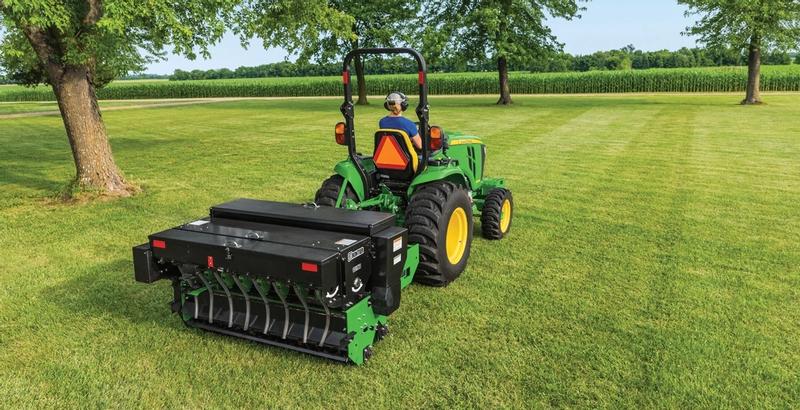
Overseeding your lawn
Have you ever driven by a neighbors yard and one year it's fresh and lush, then as time passes by, it gets a little unhealthier looking each year? Maybe it has happened to your yard in the past?
Yards that don't need a complete overhaul are the perfect candidate for overseeding.
What is overseeding? It's kind of like it sounds. It's the planting of grass seed directly into existing turf, without tearing up the turf or the soil.
Benefits of overseeding
Lawns established in the past are not suited for today's threats of diseases and pests. Just as a lot of our agricultural inputs have changed, agronomists have developed better grass seeds to hold up to the new threats.
Overseeding newer grass varieties into your older lawn will make it more resilient to diseases, droughts, pests, and traffic. It also helps revitalize your yard choking out unwanted plants and filling in bare patches.
Before you decide to overseed
Over time, the health of your lawn can deteriorate for various reasons. Before investing in seed and equipment, let's make sure that nothing else is causing these problems. Here are some things to check:
- Poor solid conditions. You may need to take a sample of your soil to make sure that the pH balance is correct and contains enough nutrients.
- Improper drainage. Is your yard holding water causing it to die off and cause mold in your soil?
- Insufficient amount of water can be just as damaging.
- Excessive thatch can choke out the growth of your current grass.
If you decide you are going to overseed, make sure you remove thatch with either a rake, power rake or a dethatcher.
Methods of overseeding
Mechanical Slit-Seeder
The best method for overseeding an established yard is using a mechanical slit-seeder. Hutson carries Billy Goat slit-seeders trusted by professionals.
These seeders have vertically placed metal blades that cut through the thatch and open a small trench in your soil. It's important to note that your seed needs proper soil contact to germinate.
If you go with this method, calibrating your slit-seeder will help you yield the best results. These mechanical seeders usually have a depth adjuster somewhere. On the Billy Goat, it's in the back under the handles. A general rule of thumb is the seed trench should be no deeper than half the length of the seed.
You'll also want to calibrate the seed distribution rate. Most slit-seeders have an adjustment located near the seed hopper. Near the handles of your machine, you should find a rate guide.
We recommend applying your seed in a crosshatch formation. This ensures better coverage and a thicker lawn. If taking this approach, you should divide your seed rate in half since you will be covering the yard twice.
Broadcast Seeder
Using a broadcast seeder can also be effective if you are not where you can rent or purchase a slit-seeder. As we talked about before, it's important to have that seed to soil contact so the seed can germinate. To achieve this without trenching, you can run over your yard serval times with an aerator. A core-type aerator will work best for this situation.
Once you have your yard aerated, you can apply seed with a broadcast spreader. Go ahead and water your yard to break up the aeration plugs and allow the seeds to wash down into the holes.
The downside to this method is that seed can get 'hung up' in the thatch layer where it does not come in contact with the soil. Make sure you choose a grass type with 'creeping' growth properties, and that is suitable for your climate zone.
When is the best time to overseed?
The exact time depends on which zone you are located in. We recommend researching your zones and finding out which grass is most suitable for your area.
In general, the best time is late summer and early fall. The next best time would be spring. Spring will take just as well, but you must be cautious not to spray any pre-emergent or broadleaf killer. These will prevent germination.
What do I need to do after overseeding?
Depending on what kind of grass see you're using and climate, you could see grass coming up 5-7 days after seeding with the right conditions and soil temps. An overseeded lawn can be fully established in eight weeks or less.
Proper watering is critical to how well your hard works plays out. Here's the watering program that we recommend.
- Immediately after seeding, water heavily so the grass sees almost adhere to the soil.
- Keep watering until the grass seeds germinate (10-14 days). Do this lightly on a daily basis. Water should soak in roughly an inch into the soil.
- After germination, you can back off of watering every day, but water heavier when you do. This allows the roots to take deeper into the soil.
- After established, water the recommended amount for your grass type.
Interested in giving overseeding a go? Reach out to your local Hutson store and our sales team will help get you set up.
